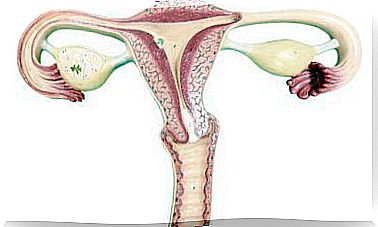Spinal Fusion Surgery: Everything You Need To Know
Spinal fusion surgery is a procedure aimed at joining two or more vertebrae that are damaged. The latter can happen in a wide variety of diseases, both local and systemic.
From an anatomical point of view, the spinal column is made up of a set of bones called vertebrae , between which is the spinal cord, an important part of the nervous system.
This surgery uses different materials to achieve greater stability in one part of the spine in order to reduce the pain caused by many diseases. If you are interested in knowing a little more about the procedure, we invite you to read the following article.
When is spinal fusion surgery performed?
Many spinal conditions may require spinal fusion surgery; especially those that cause pain. In theory, this sensation is generated by the movement of the damaged vertebrae, so their fusion would avoid discomfort.
Some of the disorders in which this procedure is usually used as definitive treatment are the following:
- Herniated disc.
- Scoliosis.
- Degenerative diseases of the vertebrae or intervertebral discs.
- Spinal stenosis.
- Severe arthritis
Many of these conditions are common in the general population. The faster you go to a doctor’s visit for evaluation and follow-up, the better.
Preparation before surgery
The doctor will indicate the steps to follow before the procedure. In general, hospitalization is indicated a few hours before the intervention, during which the consumption of food and beverages can be restricted.
They will give you a special clothing before entering the operating room and, once you are there, the anesthesiologist will administer the corresponding drugs so that you do not feel pain. The type of medication, the route of use and the degree of sedation may vary depending on each case.

How is it the procedure?
The surgeon has several approaches to access the vertebrae of interest: anterior, lateral or posterior. The term approach refers to the site through which the initial incision will be made to later complete the entire procedure.
Each has its own risks and techniques of choice. The option depends on the medical criteria and what is observed thanks to the imaging studies.
To promote fusion between the vertebrae, it is necessary to place a material between each of them. This is called a bone graft , as a small amount of bone is usually removed from the patient’s pelvis or from a hospital bone bank. Sometimes synthetic materials are used.
Different instruments, such as metal rods and screws, may be required to promote graft stability and fusion, which will occur later. Once everything is in the proper position, the surgeon will proceed to close all the planes using sutures (surgical knots or stitches).
Recovery and prognosis from spinal fusion surgery
In the first hours after spinal fusion surgery, it is common for there to be some degree of pain, although it usually improves with the use of non-steroidal anti-inflammatory drugs (NSAIDs), such as ibuprofen and opioids. The latter are used sparingly.
Fusion of the bone will take several months to happen; a time in which several rehabilitation exercises will be necessary to promote the process.
Although it is a long process, the vast majority of patients experience improvement in pain. The success of the intervention may decrease in patients with comorbidities, such as diabetes mellitus and tobacco addiction.
Possible risks of spinal fusion surgery
Spinal fusion surgery is not usually associated with major complications, but they still exist as in any surgical procedure. Some of those that are sometimes presented are the following:
- Local infections
- Bleeding scarce.
- Appearance of various blood clots in the body.
The latter usually lodge in the lower limbs, causing a deep vein thrombosis, for which there are warning signs that you can learn to detect. If any of the clots reach the lungs it causes a pulmonary embolism (a medical emergency).
Recommendations for after surgery

The recovery process is long and requires a commitment between the patient and the treating surgeon to achieve the best possible results.
Some basic recommendations (which you should first consult with your reference professional) are the following:
- Limit tobacco use: this habit is associated with conditions such as nonunion, which can cause a failure in the initial procedure and require a second surgery.
- Have a healthy diet: bone tissue requires nutrients to grow properly. Many modern diets have some specific deficiencies that could affect the process.
- Exercising consistently: Some aerobic exercises designed to strengthen the muscles that support the spine may optimize recovery. Some of them are swimming and cycling.
- Follow the instructions to the letter: this includes basic aspects such as pain medication and corresponding rehabilitation.
- Consult your doctor about the use of special girdles: there are some devices designed to promote the stability of the spine, but their use is still very controversial.
As you can see, they are easy measures that can be done without much effort. One of the main factors that affect compliance is the lack of patience during the months of recovery, so sometimes psychological and family support is vital.
Consult your doctor about spinal fusion surgery
If you have any of the problems that we mention throughout the article, it is likely that you require a surgical resolution.
Although it is something that tends to be postponed, over time the chances of complications and failure increase. In case you have not yet attended your first consultation, the neurosurgeon is the specialist in this area.









